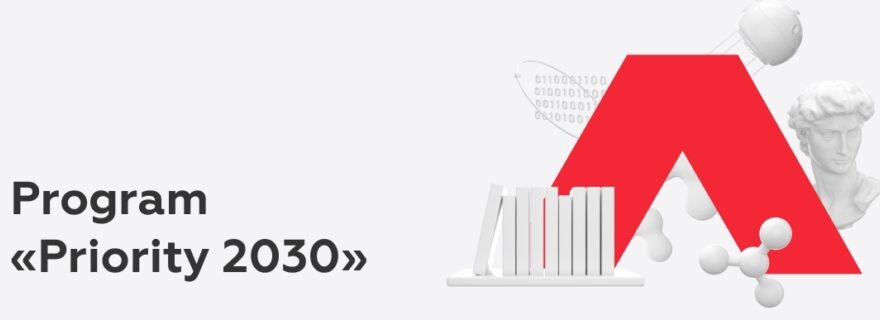Priority-2030: the New Excellence Initiative from Russia
Dmitry Kochetkov is PhD candidate at CWTS. In this post, he gives an update on Priority-2030, a new excellence initiative in the Russian higher education sector. He also makes some reflections on the role of this experience in the global context of higher education reform.
Since the mid-1990s, excellence initiatives in higher education have become part of the world's political discourse. Many governments have spent billions of euros in an effort to transform national higher education systems and achieve the so-called "world class". The effectiveness of these programs is a subject of scientific and policy debate now.
Russia launched several reform programs, the most famous of which is Project 5-100 (5top100), which lasted from 2013 to 2020. The goal of the program was to place five Russian universities in the top 100 world university rankings. Formally, the goal was not achieved, but many experts noted the positive effect of the project for Russian higher education (although, of course, there were also many critics). In May 2021, the Russian government announced the launch of the new excellence initiative Priority-2030. I think the Russian experience is interesting in the global context of higher education reform.
The Priority 2030 program is a unified program not limited by territorial, sectoral, or other principles. The Program is aimed at involving a wide range of participants; therefore, it provides several tracks for entering. There are four groups of entry criteria:
- The first group of criteria characterizes the scale of the university and thereby assesses the potential for its contribution to the socio-economic and scientific-technological development of the country or a specific region (quantitative criteria).
- The second group of criteria takes into account the specifics of the universities with a creative focus and is developed specifically for such entities. For the first time, the program provides special conditions of entry for the universities specialized in arts.
- In accordance with the third group of entry criteria, universities that meet two criteria from the first group (scale) can participate in the Priority 2030 program as candidates. To obtain candidate status, the university must commit to meeting the first group of entry criteria no later than two years after the selection. Besides, the government body of the region, on the territory of which the university is located, and (or) the federal executive body, and (or) the industrial organization must commit themselves during this period of time to provide additional financial support for the implementation of the university development program in the amount of not less than the minimum size of the basic part of the grant.
- The fourth group of criteria is focused on increasing the potential of universities that meet at least two criteria from the first group through the merger with other universities and (or) scientific organizations.
It should be emphasized that the listed requirements are minimal: they are necessary for the opportunity to participate in the selection, but the success depends on the ambitiousness of the goals, objectives, planned qualitative and quantitative commitments that the university undertakes as part of its development program, as well as on elaboration of the tools to achieve them. University development programs are based on strategic projects, usually of an interdisciplinary nature.
The competitive procedure in 2021 was carried out in two stages. At the first stage, 106 universities were selected to receive the basic part of the grant (100 million rubles per year, or approximately 1.17 million euros). 54 universities continued to fight for the special part of the grant on two tracks: research leadership and territorial / industry leadership. As a result, 46 universities were selected to receive the special part of the grant. The beneficiaries were divided into three groups based on the Program Council's assessments. The winners of the first group, in addition to the base part of the grant, will receive 994.5 million rubles by the end of 2022 (11.6 million euros), the second 426.2 million rubles (5 million euros), the third 142.1 million rubles (1.7 million euros). There is a procedure for the rotation of universities; the next selection will take place in 2023.
Priority 2030 is not just a continuation of the Project 5-100. The design of the program takes into account not only the best practices of previous initiatives but also their shortcomings. In particular, the program provides:
- Rejection of global university rankings as a basis for evaluation
- Engagement of as wide a range of participants as possible to avoid the Matthew effect on the national higher education system
- Rotation of program participants to maintain a competitive environment
So here we observe the same shift from university rankings to national and local relevance, and partnerships with the industry that we saw earlier in China.
Taking into account the number of participants (106), the Program is the most massive in the history of Russian higher education reforms and is comparable only to the Chinese Plan 211 in the world. At the same time, there are those who believe that the project will negatively affect the universities that do not participate in the Program. Probably, such concerns will always accompany project initiatives.
Another concern is that the amount of government funding will not be sufficient for the real transformation of universities. It is difficult to disagree with this. The Program can be successful only under the condition of maximum involvement of business and regions in the process of university development. Such involvement implies attracting extra-budgetary funding sources to finance development and transformation programs (I consider the lack of such sources to be the main problem of Russian higher education at the current stage). Only time will tell whether the participants of the Program will cope with this difficult task.
This text is solely the personal position of the author and was prepared on the basis of materials in the public domain.
Credit for header image: Priority-2030



0 Comments
Add a comment